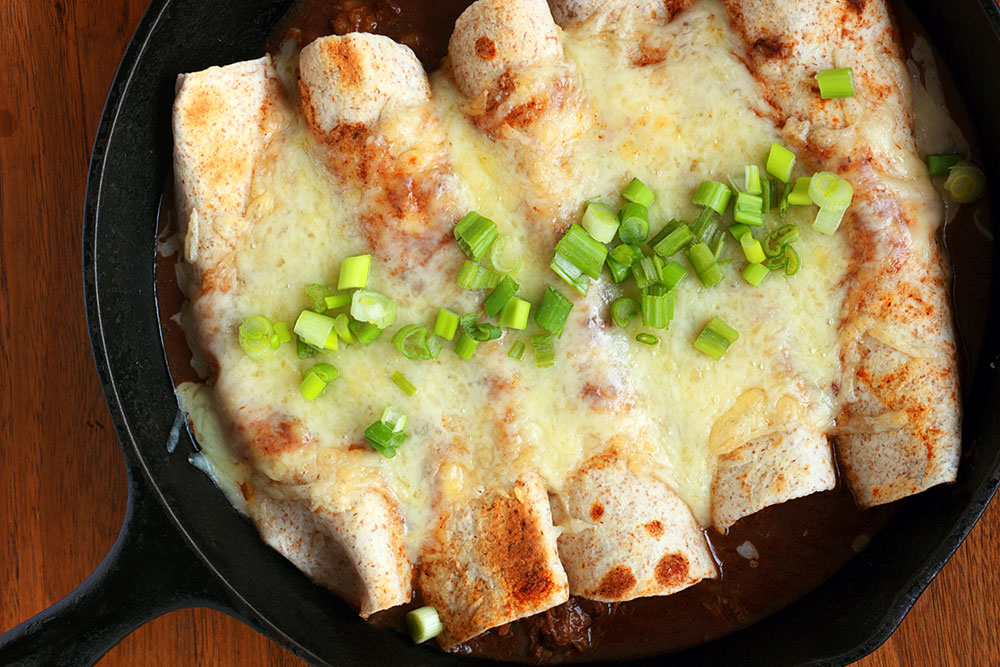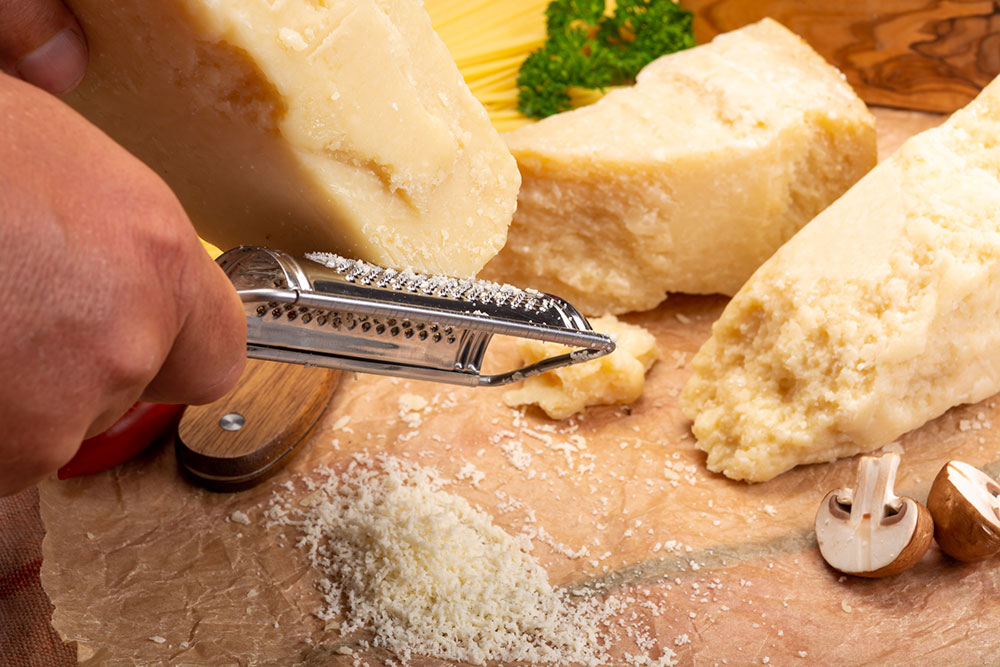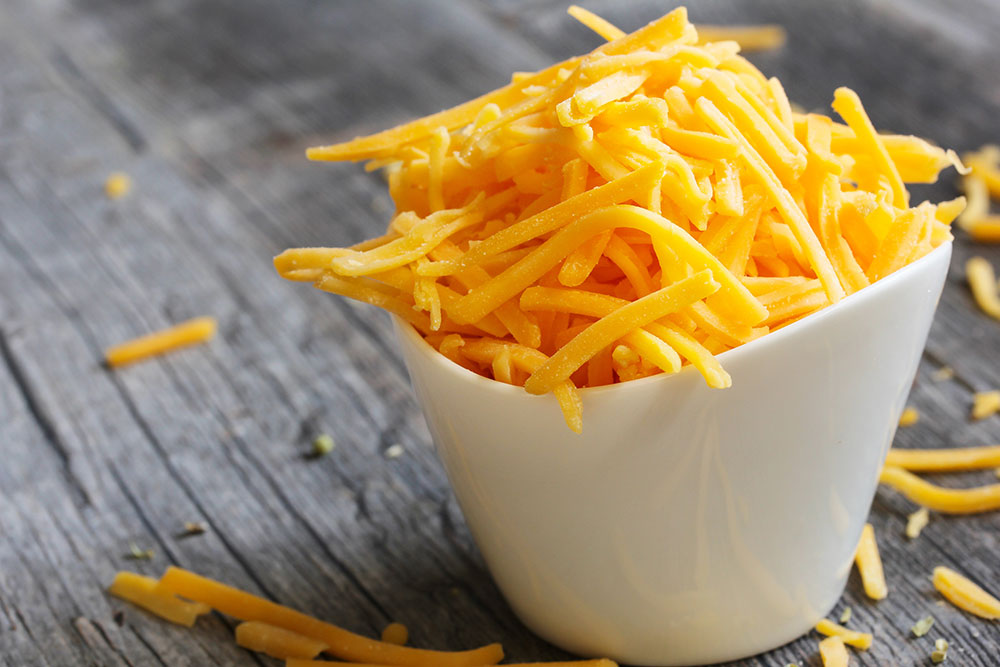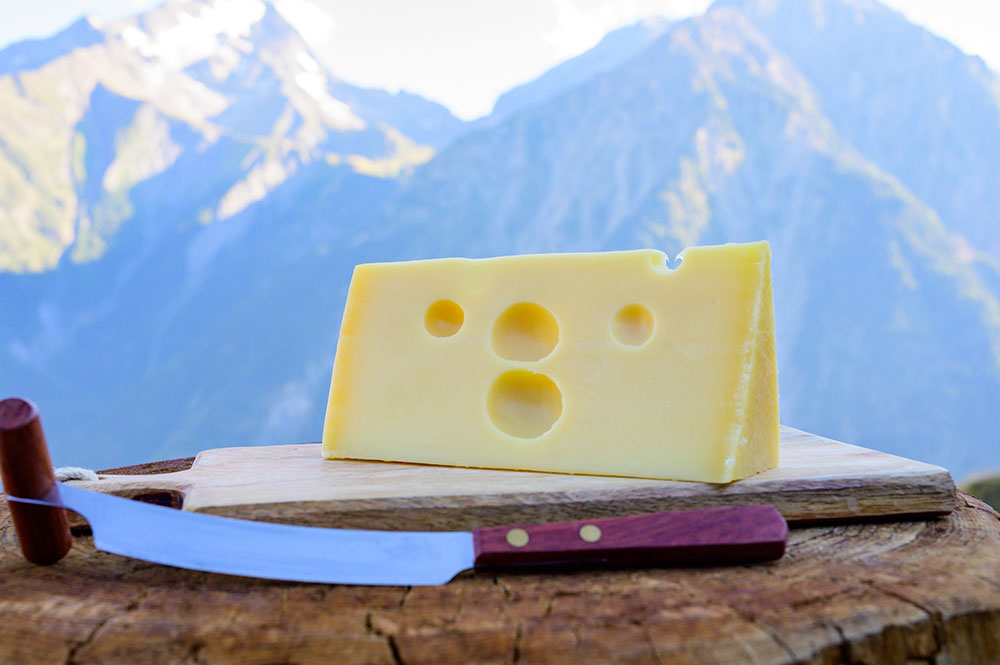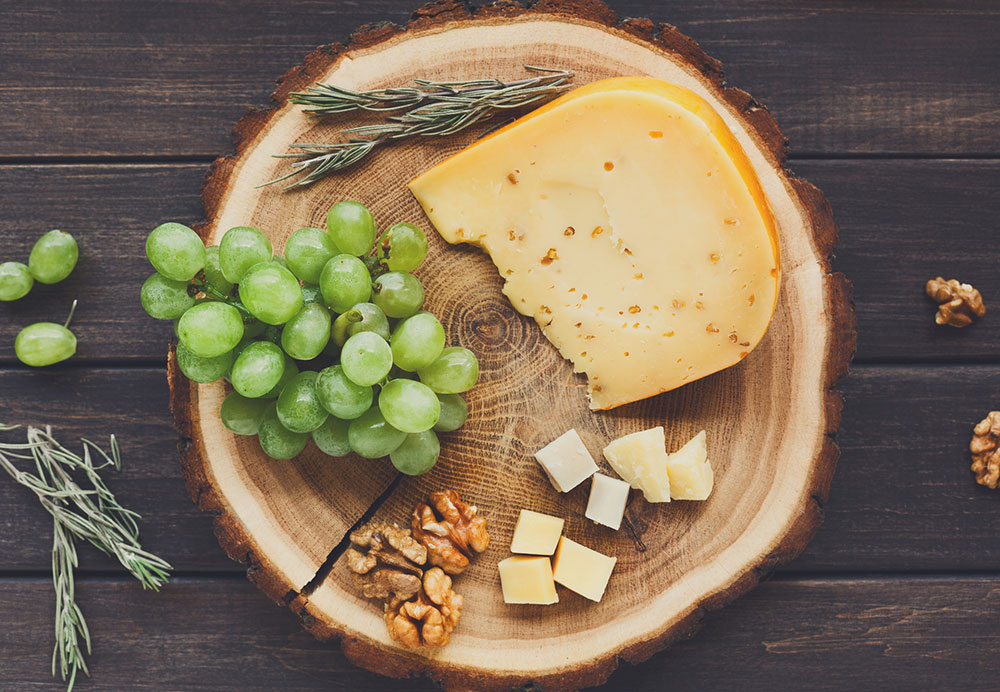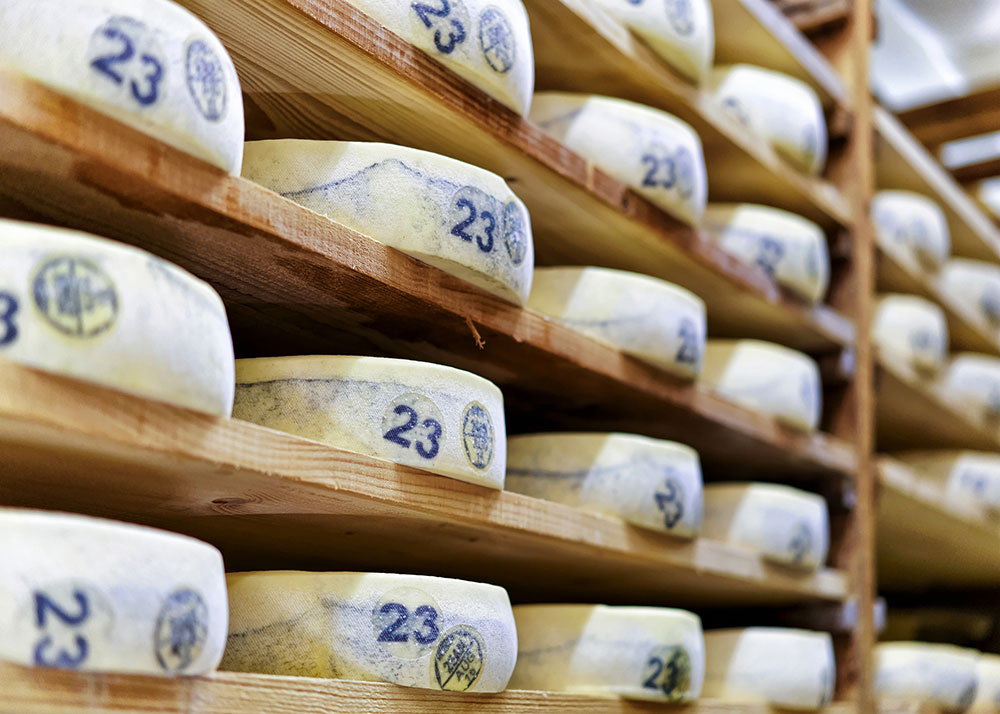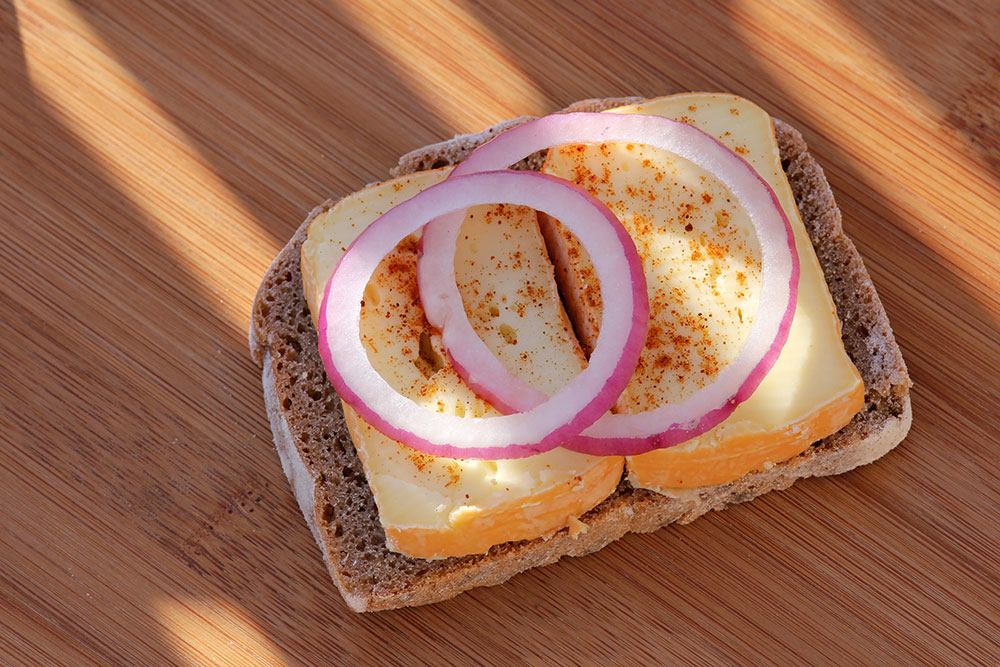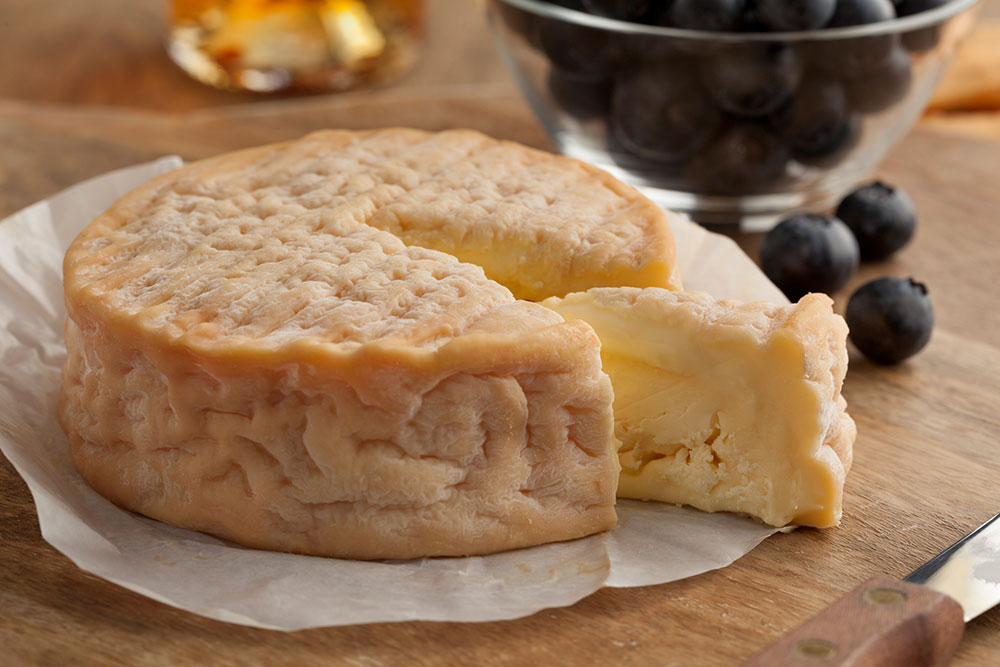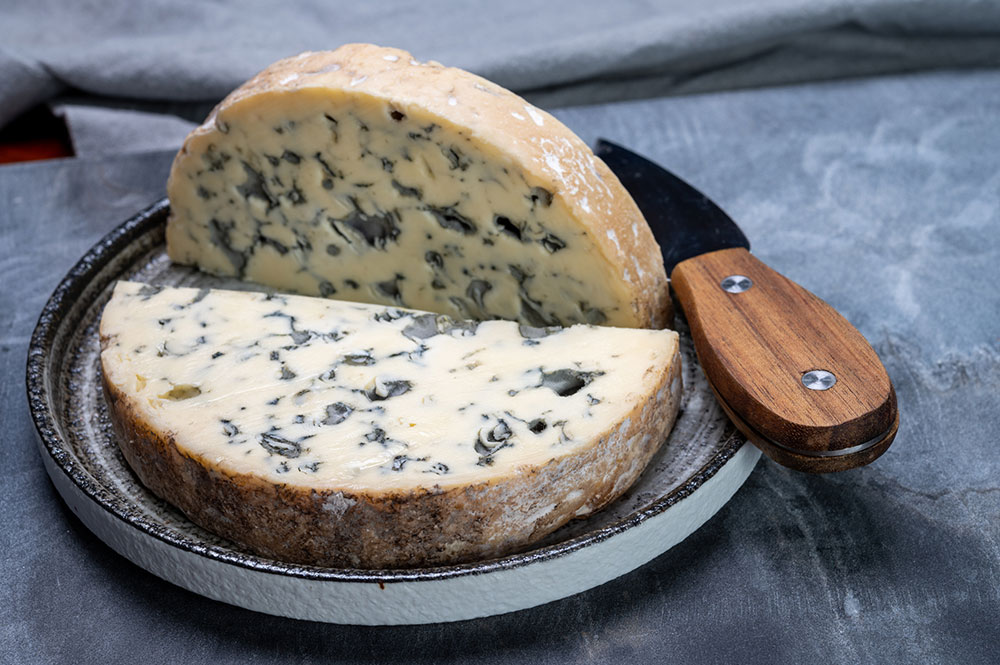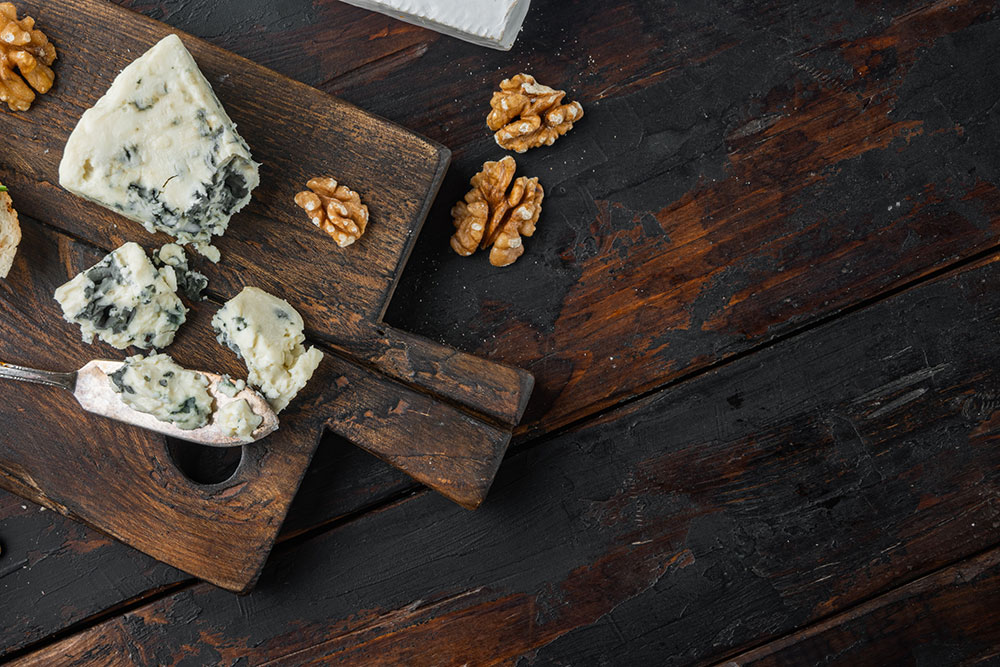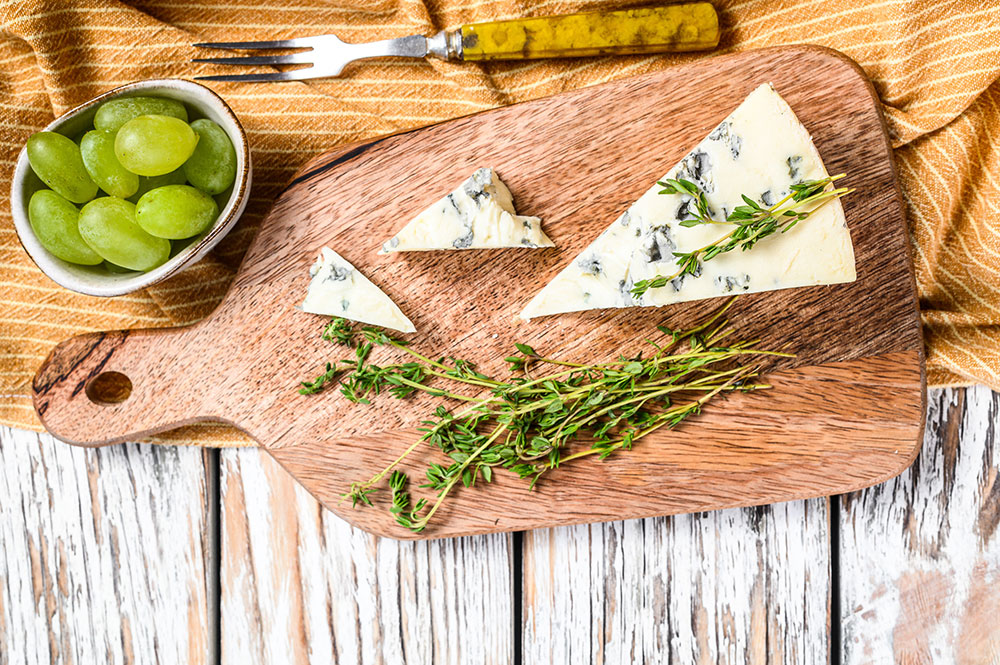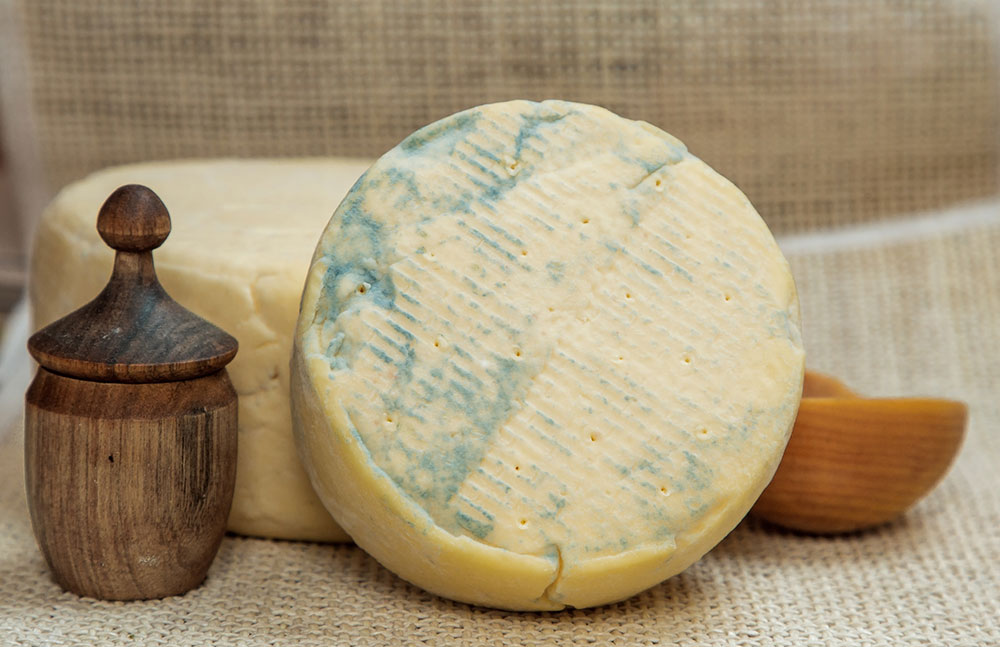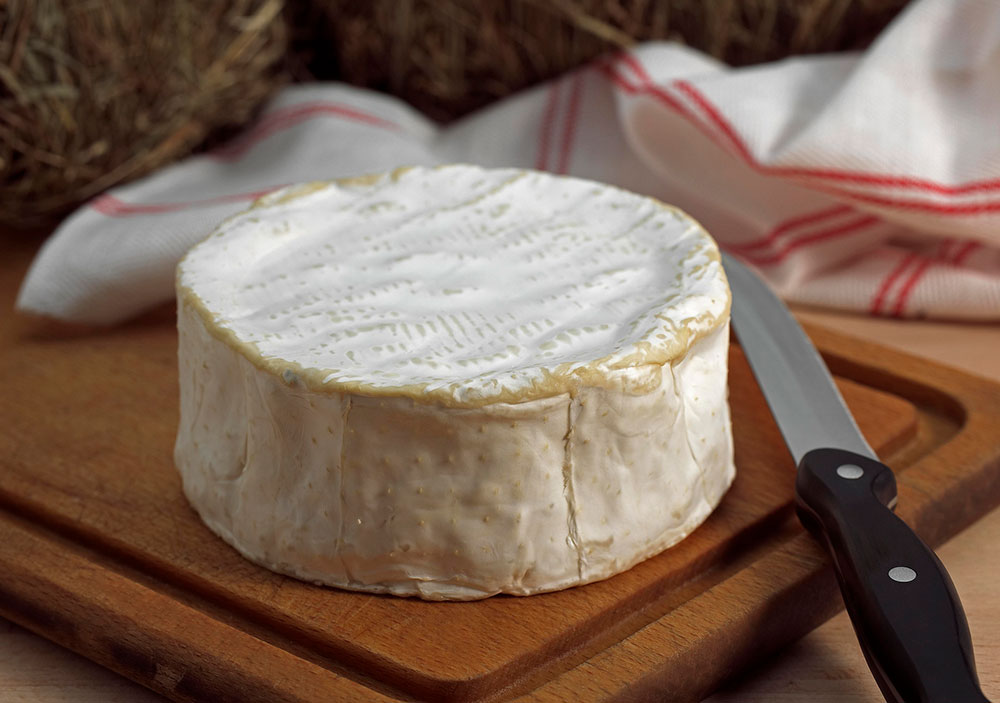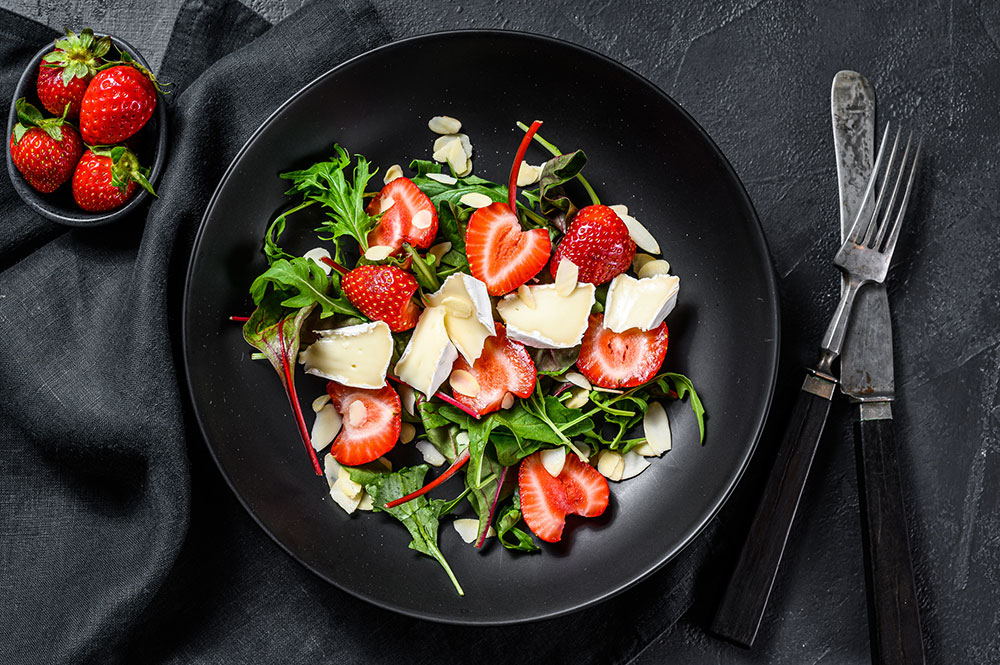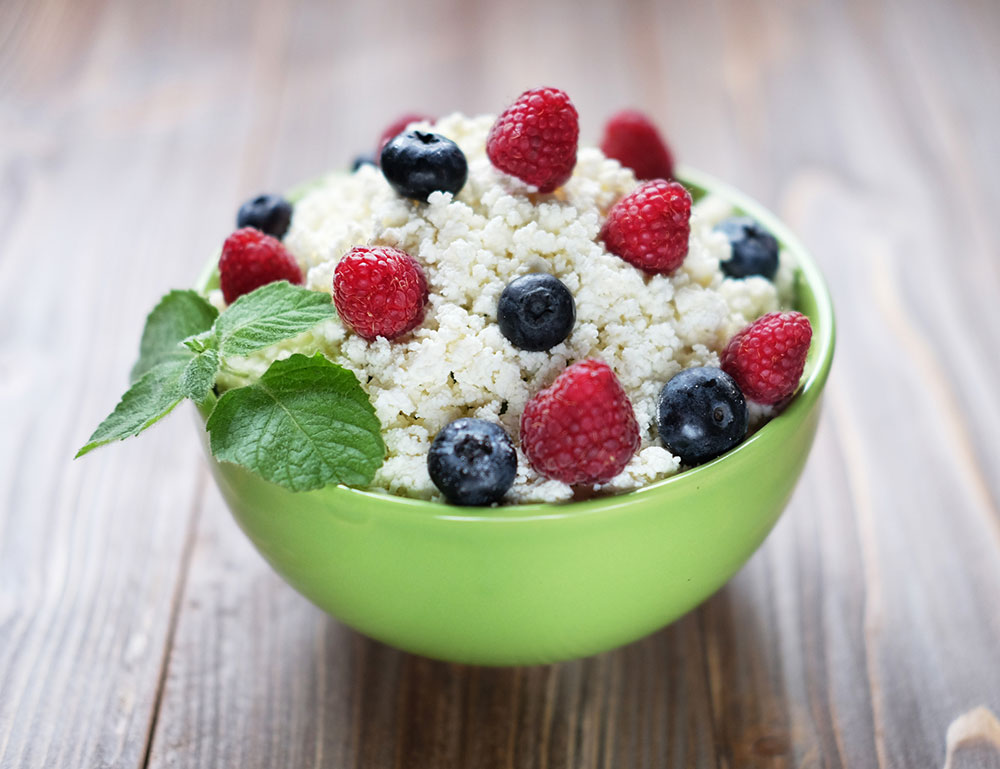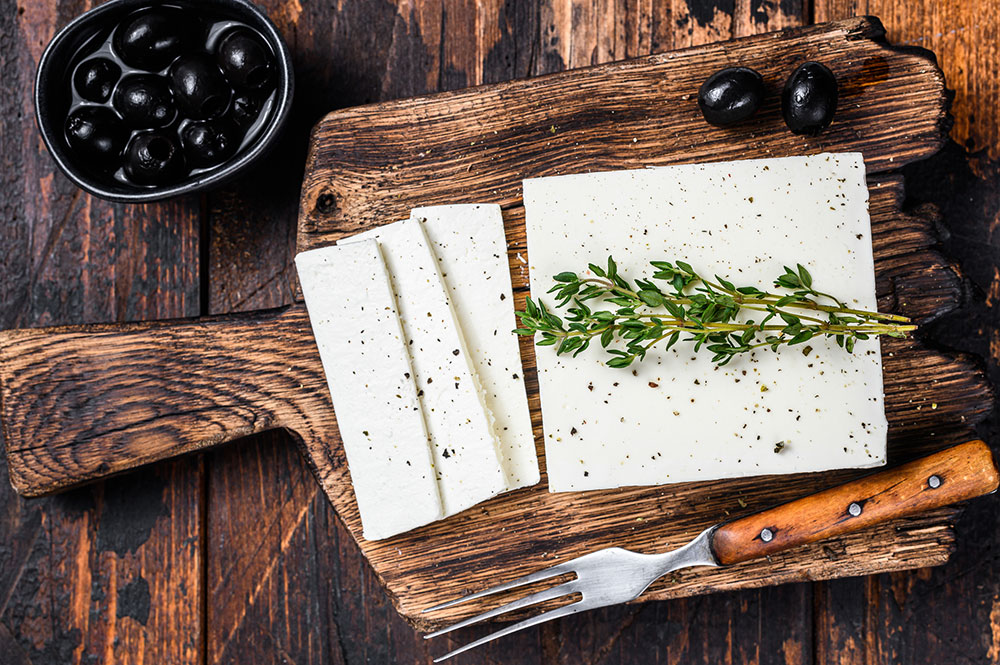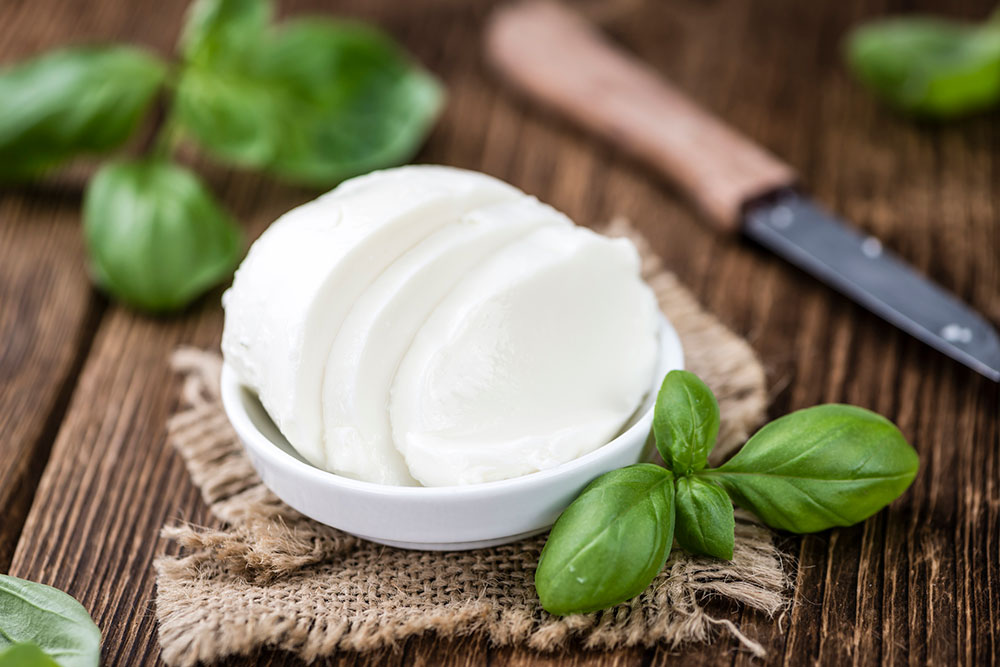Cheese has been around for more than 7,000 years, and since its first creation, thousands of different types of cheese varieties have been made to complement a range of meals and add texture and flavor to a selection of dishes. Indeed, countries worldwide have created their own variations of cheese, whether that be fresh types of cheeses like the Italian mozzarella or washed-rind (stinky) types of cheeses like French Époisses. Need Some Wine Pairings? Check out the different types of wine. There is no doubt in our minds that cheese is loved by many worldwide. And to help make you a cheese connoisseur, we’ve highlighted 24 popular types of cheese from 5 different cheese categories.
Types of Fresh Cheese (Soft Cheese)
The first types of cheese on our list are fresh cheeses that are fresh, as the name suggests. When creating fresh cheeses, the milk used is essentially turned into solid milk and doesn’t undergo the process of aging. The moisture levels of fresh types of cheese are high, and the cheese itself is soft and white, with a milky-like flavor. Here are 6 of the most popular different types of cheese in the fresh cheese category.
Fresh Mozzarella Cheese
Fresh mozzarella cheese originates from Southern Italy and, across the country, still predominantly consists of buffalo milk. A cow’s milk variant of mozzarella hit the market to keep up with the ever-growing demand; it will most likely be the type of mozzarella you’ll find at your local grocery store. Mozzarella is created using the pasta filata method, where cheesemakers mix cow or buffalo milk is with a whey starter before incubating it. Rennet is then added to form curds in the milk, which, once heated in water, form strings and an elastic texture that makes up mozzarella.
Milk type: Buffalo or cowCountry of origin: Southern ItalyFlavor profile: Mild creamy flavor; refreshingFood pairings: Pizza, pasta dishes, or saladsDrink pairing: Crisp white wine or dry sparkling winesAge: Fresh mozzarella requires no aging time
Fresh Ricotta Cheese
Ricotta cheese is another cheese with an Italian origin that cheesemakers make from a variety of milk, the most popular of which is cow milk. Factories separate milk into solids during the cheesemaking process, called curds, and liquids called whey. Most of your well-loved cheeses are made from the milk’s solid part (curd), but ricotta is made from a small amount of curd left behind in the liquid part (whey). After adding whole milk, the factories heat the whey, and the small amount of curds left behind begins to thicken. Once strained in cheesecloth, the remaining whey will be a soft, white, and fluffy ricotta.
Milk type: Cow, sheep, or goatCountry of origin: ItalyFlavor profile: Bland to slightly sweetFood pairings: Toast or roasted vegetablesDrink pairings: Crisp white wines, dry rose wines, or light-bodied red winesAge: Fresh ricotta requires no aging time
Mascarpone
Also known as Italian cream cheese, Mascarpone cheese originated in Northern Italy and comprises two simple ingredients: Citric acid and heavy cream. Making mascarpone types of cheese is simple. Cheesemakers add citric acid to heated heavy cream, which helps to thicken and solidify the cream before running it through a cheesecloth. Mascarpone has an acidic but sweet taste. It is silky and spreadable with a buttery texture and perfect for savory and sweet dishes.
Milk type: CowCountry of origin: Northern ItalyFlavor profile: Slightly sweet and milkyFood pairings: Tiramisu or on its own with fresh berries and honeyDrink pairings: Light and fruity dessert wineAge: Mascarpone requires no aging time
Buratta Cheese
Buratta cheese has a soft outer mozzarella shell that encases a creamy, mild, and fresh center. Makers of buratta heat cow’s milk and mix it with cultures and rennet, which then begins to curdle. As the whey from the milk drains away, they pour boiling water over the remaining curds, which form the mozzarella shell. They shape the mozzarella curd into a pouch and fill it with a mixture of fresh curds and cream before finally sealing it off and sculpting it into the cheese’s signature dumpling-like dome.
Milk type: Cow or buffaloCountry of origin: Southern ItalyFlavor profile: Buttery and milkyFood pairings: Pastas, salads, or Italian breadDrink pairings: Light wines such as pinot grigioAge: Fresh Burrata cheese requires no aging time
Feta Cheese
Cheesemakers originally made feta cheese with goat’s milk because it contains twice as much fat as cow’s milk. The soft, crumbly, and salty brined cheese originates from Greece and compliments various dishes. Feta types of cheese get their recognizable salty taste from the salty brine they are curated in. The length of time feta brines for will determine how salty it becomes; the longer it is curated, the saltier it is. Cheesemaking factories use sheep’s milk, goat’s milk, or a mixture of the two to create feta cheese, which they add to rennet and casein. Once the milk thickens, the whey drains, and the curd is separated. The feta is then salted and dried before being submerged in a salty brine.
Milk type: Sheep, goat, or cowCountry of origin: GreeceFlavor profile: Salty and tangyFood pairings: Fruits, pizza, or saladsDrink pairings: Fragrant white wineAge: Feta is cured in a salty brine for one week to several months
Cottage Cheese
Cottage cheese was one of the first types of cheese made in America after immigrants brought the process of fresh cheese making to the US. The slightly acidic but mild cottage cheese is made in America by factories that heat cow’s milk and add acid, separating the solids and the liquids from the milk. Once the curd forms, they cut them down to allow any additional whey to drain before cooking, pressing, and adding salt.
Milk type: CowCountry of origin: AmericaFlavor profile: Creamy and saltyFood pairings: Fruits or vegetablesDrink pairings: Red winesAge: Fresh cottage cheese requires no aging, making it a younger cheese
Types of Mold Ripened Cheeses
A mold ripened kind of cheese matures to allow mold to grow on the surface, which creates an edible rind. Cheesemakers add mold spores to milk during production or spray them on the surface of the completed cheese. Read Also: 30 Different Types of Bread Three well-known mold-ripened types of cheese made it onto our list of cheeses, all of which come from France.
Camembert
Originally made in France, Camembert has a soft-ripened white rind and a runny interior that goes well with fresh bread and crackers. Camembert and brie regularly get mixed up, but the taste of Camembert is earthier and more intense. French cheesemakers mix pasteurized or unpasteurized cow’s milk with yeast and then curdle it to help promote the maturing of the rind. They follow up this process by draining the curds of the whey and setting them to brine before they age for at least four weeks. During the aging process, the cheese turns so the mold can evenly grow from inside the cheese out.
Milk type: CowCountry of origin: FranceFlavor profile: Earthy and nuttyFood pairings: Crackers and breadDrink pairings: Cider, champagne, or a fruity red wineAge: Camembert ages for at least 4 weeks
Brie
As we mentioned before, Brie and Camembert regularly get confused as both cheese types have similar white rinds. However, brie has a milder and creamier taste and a higher milk fat percentage. Like Camembert, cheesemakers can make brie with either pasteurized or unpasteurized milk from a cow or goat. They thicken the milk by adding rennet and enzymes before placing them in a mold to allow the whey to drain off. This delicious French cheese is then salted and left to age for at least five weeks.
Milk type: Cow or goatCountry of origin: FranceFlavor profile: Creamy, rich, and butteryFood pairings: Crackers or fruitDrink pairings: Slightly acidic white winesAge: Brie ages for at least 5 weeks
Brillat-savarin
Brillat-savarin is a triple cream dessert cheese with a fat content of at least 75%. The outer rind is soft and white, with the interior paste being a buttery-yellow color with a dense, moist, and creamy texture. Three dairies come together in France to add specific cream to the whole milk during the production of the Brillat-savarin cheese. Once the curd forms, it is cut and molded to allow the whey to drain off. The cheese is then salted and left to age for four to five weeks.
Milk type: CowCountry of origin: FranceFlavor profile: Butter, salty and creamyFood pairings: Crispy baguette or fruitDrink pairings: Sparkling wineAge: Brillat-savarin ages for 4 to 5 weeks
Types of Blue Cheeses
Blue cheese varieties get their names after the blue-colored mold that grows on and throughout the cheese. Factories add mold spores that require moisture and oxygen to thrive directly into milk or curd with high whey levels. They then pierce the blue cheeses with a needle to create distinctive veins that the blue mold can grow through.
Stilton
The crumbly soft texture of Stilton cheese has rich and nutty flavors alongside the beautiful blue veining throughout its interior. Cheesemakers add cow’s milk into vats with cultures, rennet, and Penicillium Roqueforti. Once the curds form, the makers drain the whey and divide the curds into molds. After five days, the factories remove the molds, and store and wrap the cheese for a further five weeks to block out air. After the five-week storage process, the makers use needles to pierce the cheese so the blue mold can grow throughout the interior, and after a minimum of nine weeks, the cheese is complete and ready to be sold.
Milk type: CowCountry of origin: EnglandFlavor profile: Creamy, sweet, and saltyFood pairings: Crackers or breadDrink pairings: Sweet red or white winesAge: Stilton ages for a minimum of 9 weeks
Gorgonzola
Gorgonzola is a soft and crumbly blue cheese that ranges in taste. The time the cheese ages for drastically changes the flavor and color of the final product. A shorter aging time produces creamier types of cheese, while an extended time produces a strong and pungent cheese. Pasteurized cow’s milk with a combination of rennet, salt, enzymes, and Penicillium Roqueforti mixes together until it curdles. As the milk curdles, the makers cut it into small pieces, drain it of whey, and transfer it into molds. They then turn the gorgonzola wheel repeatedly and leave it to rest before salting it and placing it in a warm room for seven days. Finally, they transfer the wheel to a cold room and puncture it with needles to allow the cheese to gain its characteristic blue veins.
Milk type: CowCountry of origin: ItalyFlavor profile: Salty and earthyFood pairings: Fruits or jamsDrink pairings: Savoury red or white wineAge: Gorgonzola ages for roughly 3 to 4 months
Roquefort
Roquefort is a cheese from Southern France that doesn’t have a rind but has a crumbly and moist texture. The sheep from this part of France graze on a selection of plants and grass, giving the cheese its specific flavor. Fromagers heat unpasteurized sheep’s milk and combine it with salt, rennet, and Penicillium spores. They let the curd rest for a few hours before cutting it into small pieces to allow the whey to drain. Once transferred into round molds, they dry the cheese in a salt bath for several days and pierce it with needles to encourage the mold to travel throughout the cheese’s interior.
Milk type: SheepCountry of origin: Southern FranceFlavor profile: Sharp, tangy, and saltyFood pairings: Nuts, fruits, or crackersDrink pairings: Strong or sweet winesAge: Roquefort ages for a minimum of 5 months
Fourme d’Ambert
Fourme d’Ambert is one of France’s oldest types of cheese with a rich and nutty flavor. The French allow the milk to curdle in the making process of fourme d’Ambert before infusing it with Penicillium Roqueforti and rennet. Once curdled, cheesemakers place the mixture in a vat, stir it, cut it, and put it into molds so it can strain. The factories leave the cheese for 24 hours before covering the surface with dry salt or a brine before piercing it with needles to create air spaces for the blue mold to develop. Once aged for a minimum of 28 days, they can then give the cheese the title of Fourme d’Ambert.
Milk type: CowCountry of origin: FranceFlavor profile: Rich and slightly nuttyFood pairings: Bread or vegetablesDrink pairings: Dessert wines and full-bodied red winesAge: Fourme d’Ambert ages for 1 to 4 months
Types of Washed-Rind Cheeses
Cheesemakers regularly wash washed-rind cheeses with brine, wine, beer, and other alcohols as they age. The regular washing promotes the growth of bacteria that give these cheeses incredible shades of pink, red, and oranges and a distinctive and pungent smell. The smell given off by different types of cheeses in the washed-rind category gives these cheeses the alternate name of stinky cheeses. Their soft outer rinds are usually edible; however, they may not be to everyone’s liking.
Époisses
Monks produced Époisses in Burgundy, France, in the 1600s, and the cheese is said to be one of the smelliest cheeses in the world. France’s public transport companies have even banned the cheese from being taken on board because of its pungent smell. In the initial process of making the cheese, factories heat unpasteurized cow’s milk, mix it with rennet, and hold it for 16 hours. They then cut the curd and transfer it into molds to drain the whey. The makers then hand-rub Époisses regularly with brine and alcohol, such as brandy or port, to encourage mold and bacteria growth, giving the cheese its rust-colored rind and unique smell.
Milk type: CowCountry of origin: FranceFlavor profile: Meaty, earthy and nuttyFood pairings: Crusty bread or fruitDrink pairings: White wineAge: Époisses ages for at least 6 weeks
Limburger
Trappist monks in the 19th century produced the brick-shaped limburger cheese. The cheese is an orangey-pink color due to the salt brine washings it receives during the aging process. To create limburger cheese, cheesemaking factories heat pasteurized cow’s milk in vats before adding cultures and rennets to coagulate the milk into curd. They then cut the curd and drain it before washing it in a salt brine to help cultivate the Brevibacterium linen, which gives the limburger cheese its beautiful rind color and smell. The factories age limburger for one to three months, and the length of time they age it changes the cheese’s texture, taste, and smell. Aging the cheese for one month will result in firm and crumbly cheese, whereas aging it for three months will produce an incredibly soft and pungent cheese.
Milk type: CowCountry of origin: BelgiumFlavor profile: Aromatic and spicyFood pairings: Rye bread with red onionDrink pairings: Fruity winesAge: Limburger ages for a minimum of 1 month
Ami du Chambertin
Ami du Chambertin is another cheese with an intense aroma that the French make in a process fairly similar to that of Époisses. Like Époisses, makers heat unpasteurized cow’s milk and mix it with rennet to form curds. Once the curds form, they cut them, place them in molds, and rub them with brine and Marc de Bourgogne brandy, which gives the cheese a light brown-orange color.
Milk type: CowCountry of origin: FranceFlavor profile: Buttery, salty, and vibrantFood pairings: Salad, crackers, or chutneyDrink pairings: Red wineAge: Ami du Chambertin ages for roughly 2 months
Types of Semi-Hard and Hard Cheeses
Semi-hard cheeses are uncooked and pressed, whereas hard cheeses are cooked and pressed. The texture of semi-hard and hard cheeses is firm, dense, and ranges from a light yellow to orange. Semi-hard kinds of cheese usually have a buttery, sweet and earthy taste, with hard cheeses on the spectrum’s saltier end. Related Reading: How to Make the Perfect Charcuterie Board
Gruyère
View in gallery
Gruyère is a cheese used in fondues and as a table cheese that goes well with Italian meats and sandwiches. The completed cheese is pale yellow, has a creamy and nutty taste, and showcases the distinctive small holes of Swiss cheese. Cheesemakers curdle unpasteurized cow’s milk with rennet before separating and placing it in molds. Once in the molds, they drain the whey, and press the curds. They sit the molds in a salt bath for 24 hours before transferring them to an aging room, washing them, and leaving them to age for a minimum of six months.
Milk type: CowCountry of origin: Southern Switzerland and Eastern FranceFlavor profile: Rich, creamy, and saltyFood pairings: Hams and Italian meatsDrink pairings: ChampagneAge: Gruyère ages for a minimum of 6 months
Gouda
Gouda cheese dates back as early as the 12th century and gets its name from a town in the Western Netherlands. It is a long-lasting cheese with low moisture content and a rind treated with saffron-infused vinegar. Dutch cheesemaking factories heat pasteurized milk and add it to cultures and rennet, which thickens the milk. They cut the curds and scald them with hot water to help extract unwanted moisture before hooping and pressing it to reduce the moisture further. The factories then place the Gouda wheel in salt brine and coat it in wax to give the cheese its characteristic exterior. The wheels then age for a month to five years.
Milk type: CowCountry of origin: NetherlandsFlavor profile: Rich, nutty and caramellyFood pairings: Fruit and crackersDrink pairings: ChampagneHow age: Gouda ages for 1 month to 5 years.
Edam
Edam cheese usually comes packaged in red wax and, like gouda, comes from the Netherlands. Its mild, salty, and nutty flavor increases with aging and goes well with fruits and crackers. Cheesemakers originally made edam from whole cow’s milk, but nowadays, they make it with part-skim milk. They heat the part-skimmed milk and add cultures and rennet to coagulate the curd. Once this process is complete, they cut and stir the curd to reduce as much moisture as possible. Once the whey drains from the curd, they press the curds and transfer them to molds —the edam wheel salts in brine before aging for one to ten months.
Milk type: Cow or goatCountry of origin: NetherlandsFlavor profile: Mild, salty, and nuttyFood pairings: Fruits or breadDrink pairings: Redberry wineAge: Edam ages for 1 to 10 months
Emmental
Of all the types of Swiss cheese, Emmental is the most iconic–and the original. An equally famous cheese for its distinct “holey” appearance as for its taste, this is a versatile semi-hard cheese. Put it on a sandwich, or savor the superior melting characteristics of one of the most traditionally popular fondue cheeses. Cheesemakers in Switzerland add rennet to unpasteurized cow’s milk to begin the curdling process. After the cheese curdles, the makers separate it and place it in molds so they can drain the whey and brine the curd. Finally, they add propionic bacteria that release carbon dioxide bubbles which get trapped, and give the cheese its well-known holes before leaving it to age for two to eighteen months, depending on the type and the desired flavor.
Milk type: CowCountry of origin: SwitzerlandFlavor profile:Nutty, buttery, often tangy tasteFood pairings: Fondues, sandwiches, or pastaDrink pairings: Dry white wineAge: Emmental ages for 2 to 18 months
Cheddar Cheese
Cheddar cheese has become a highly produced dairy product worldwide, and to be classed as cheddar, the cheese must have less than 39% moisture content and be hard and dry. Like most cheeses, factories add cow’s milk to rennet to curdle and later heated. Factories then put the cheddar through a process known as cheddaring, where they cut the cheese into large slabs and place it on top of each other. This process helps remove moisture from the cheese and acidifies the curd giving it an elastic texture. Finally, they press the curds into molds and age them for at least three months. Cheddar cheese comes in many forms, from mild to extra sharp, and the longer the cheese ages, the sharper it tastes.
Milk type: CowCountry of origin: EnglandFlavor profile: Mild, smooth, and creamyFood pairings: Fruit and jamsDrink pairings: Crisp beer or white wineAge: Cheddar ages for 3 to 18 months
Parmesan
One of the most famous types of Italian cheese, Parmesan comes from skimmed or partially skimmed cow’s milk. The difference between parmesan and Parmigiano-Reggiano is that Italians make Parmigiano-Reggiano in four provinces of Italy. Under Italian law, only cheese produced in these provinces can gain the title of “Parmigiano-Reggiano.” Italians give the name parmesan to the same type of cheese made in different Italian provinces and countries. Cheesemakers add the cow’s milk to bacteria and rennet before heating it. They then separate the curd and leave it to settle before straining it through a cheesecloth and placing it into molds. Following this, they then submerge the cheese in salt brine for roughly three weeks before leaving it to age for twelve months to three years.
Milk type: CowCountry of origin: ItalyFlavor profile: Sharp, rich, and tangyFood pairings: Prosciutto or pastaDrink pairings: White or red wineAge: Parmesan ages for a minimum of 12 months
Monterey Jack
Monterey Jack originated in California and is a fantastic cheese for snacking or melting. American factories place pasteurized cow’s milk in a vat and heat it before adding cultures and rennet. After this, the factories then cut the curd into small pieces before heating it again and removing any whey. Once the cheesemakers remove the whey, they mix the curds with salt before pressing and flipping them. The factory vacuum seals the Monterey jack with a high moisture content before leaving it to age for six weeks to four months. For traditional monterey jack, they leave it to dry so the ride can form on its exterior before oiling it and leaving it to age for ten months.
Milk type: CowCountry of origin: USAFlavor profile: Buttery and mildFood pairings: Toasted sandwiches or soupsDrink pairings: Dry red wineAge: Monterey Jack ages for 6 to 9 months
Halloumi
In Cyprus, they traditionally make halloumi from goat or sheep’s milk, but now cheesemakers also produce a cow milk variant. Halloumi has a spongy texture, no rind, and is tangy and salty when eaten. To make halloumi, cheesemakers heat milk and add rennet, to create curds. They then cut the curds, drain them, and leave them to firm up before pressing them into molds. What makes halloumi different from other cheeses is that cheesemakers then poach it in water to give the cheese a high melting resistance. After that, they salt the cheese and either eat it fresh or place it in brine to age for several months.
Milk type: Sheep, goat, and cowCountry of origin: CyprusFlavor profile: Tangy and saltyFood pairings: Salad and vegetablesDrink pairings: ChampagneAge: Parmesan ages for a minimum of 12 months
Different Types of Cheese: Final Thoughts
Cheese will forever be eaten by various cultures worldwide, and in its many forms, there is sure to be a cheese that each and every one of us loves. Whether you prefer eating your cheese on its own, with crackers, in a hamburger, or in pasta dishes, cheese will most likely remain near the top of the most popular foods in the world for many, many years to come. So, let us know down below, what is your favorite type of cheese and are there any others you’d like for us to review? We’d love to know your opinions!

